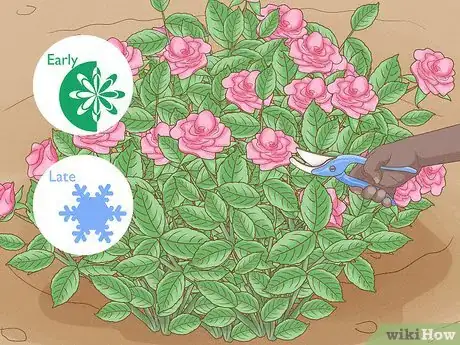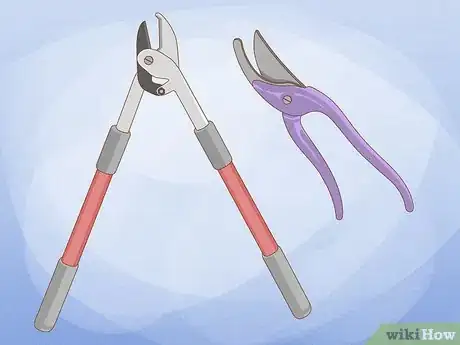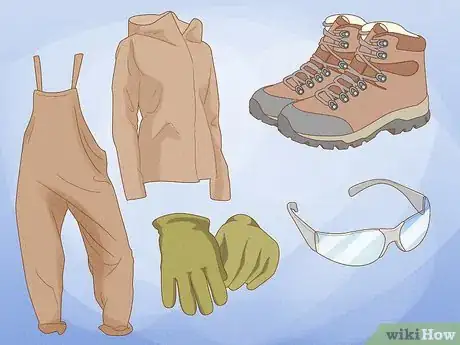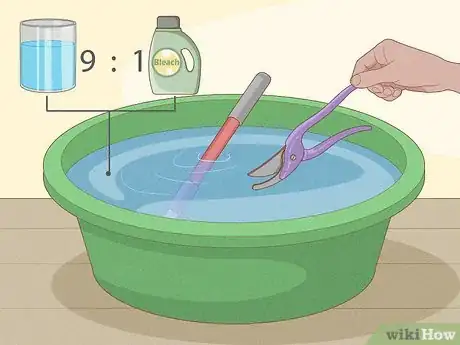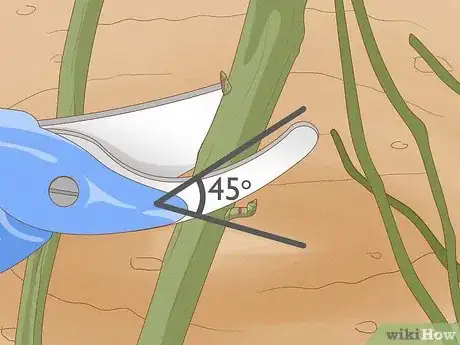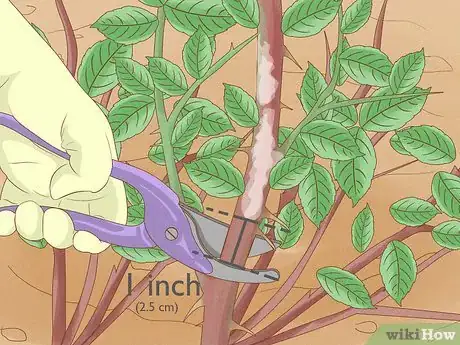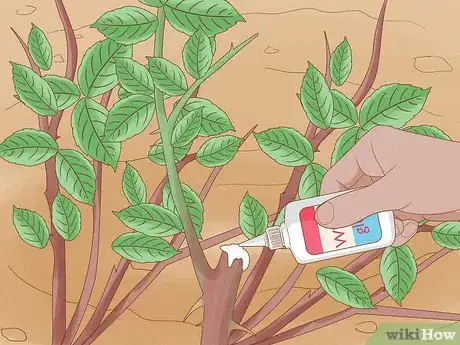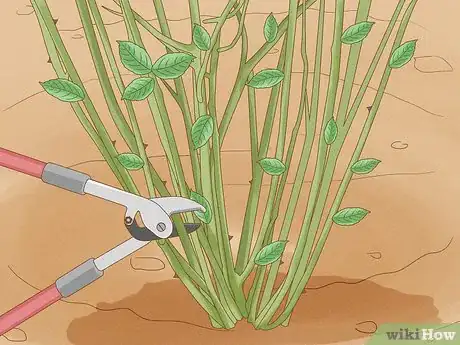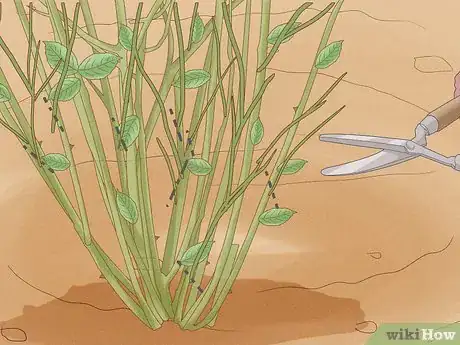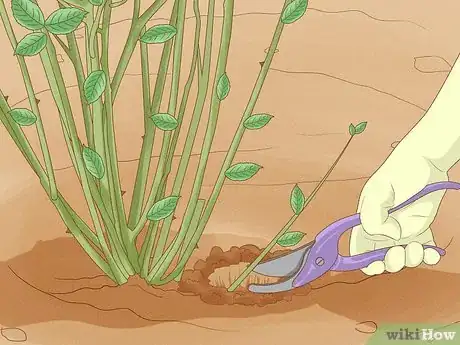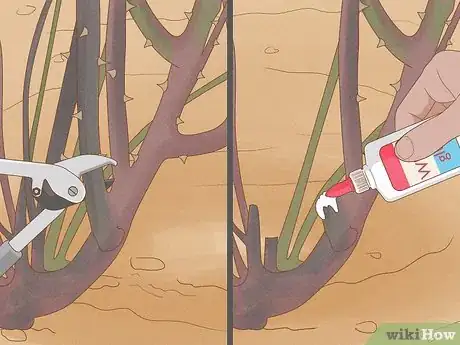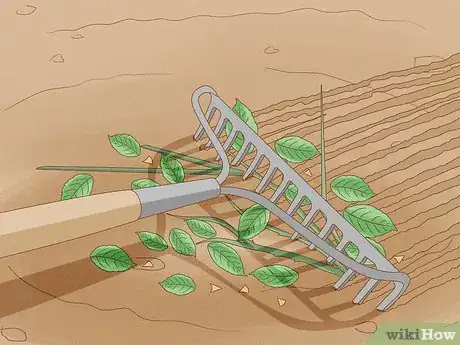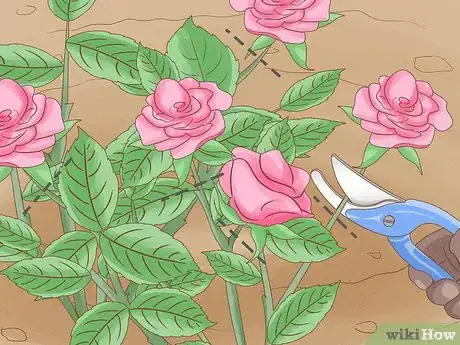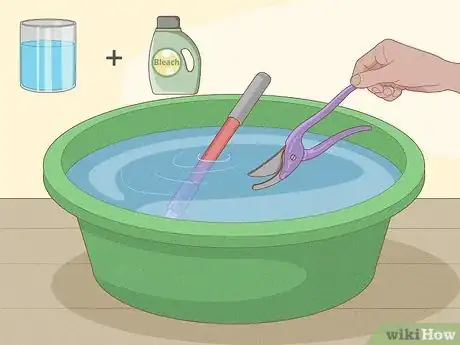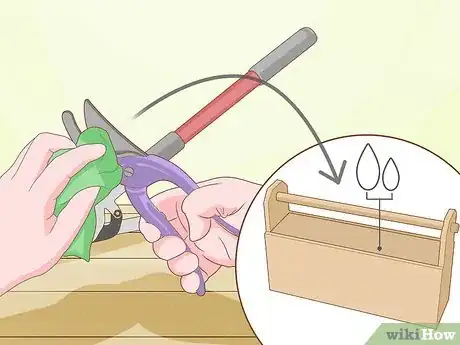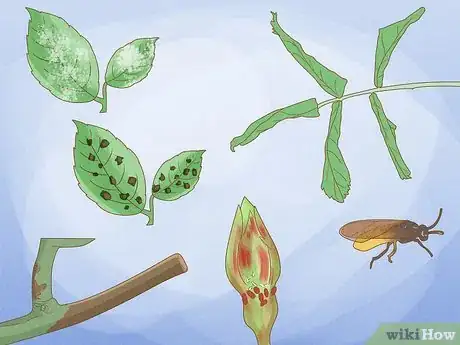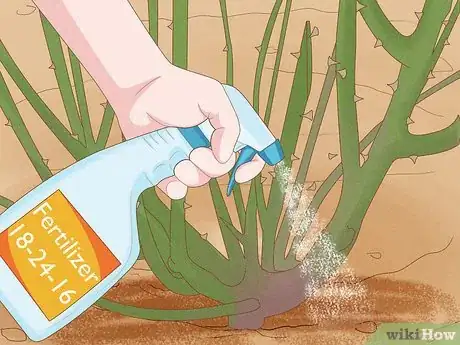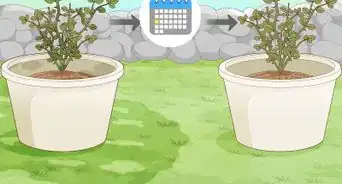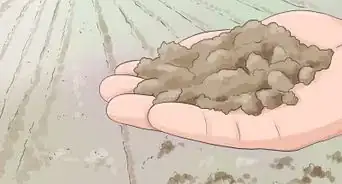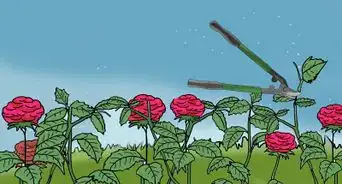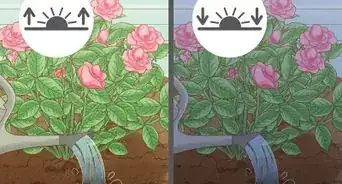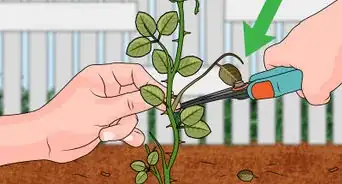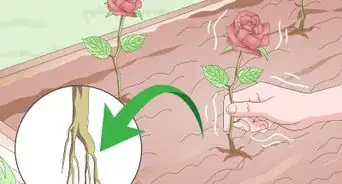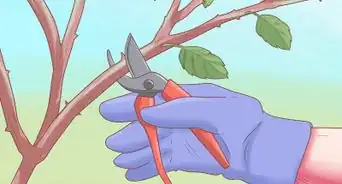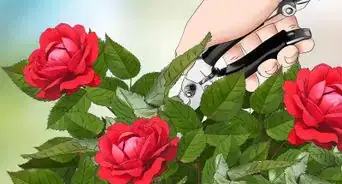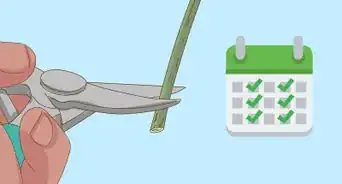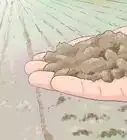This article was co-authored by Lauren Kurtz. Lauren Kurtz is a Naturalist and Horticultural Specialist. Lauren has worked for Aurora, Colorado managing the Water-Wise Garden at Aurora Municipal Center for the Water Conservation Department. She earned a BA in Environmental and Sustainability Studies from Western Michigan University in 2014.
There are 7 references cited in this article, which can be found at the bottom of the page.
This article has been viewed 16,396 times.
Shrub roses are a popular garden plant, and for good reason: they are beautiful and smell wonderful. They are easy to take care of, but if you want a healthier shrub rose with more blooms, you will have to prune it. Knowing how to prune a rose properly is very important. How you care for the rose afterwards is also important, as improper care can result in pests or disease.
Steps
Planning Ahead
-
1Prune shrub roses in late winter or early spring. This is the best time because the new buds and leaves are just starting to come in, making them distinguishable from the old growth. If you only need to deadhead your shrub rose, you should do it in late summer, right after the rose is done flowering.[1]
-
2Get some hand pruners and loppers. Make sure that the hand pruners are made to cut canes up to 1⁄2 inch (1.3 cm) thick. If you can't get loppers, or simply don't like using them, get a small pruning saw instead. You'll need the loppers/pruning saw to cut thicker canes and stems.[2]Advertisement
-
3Protect yourself with heavy-duty gloves and safety goggles. It would also be a good idea to wear a pair of long pants and closed-toed work boots. The long sleeves and pants will protect your skin against the rose's sharp thorns, while the goggles will shield your eyes against any whipping stems.[3]
- If you don't have any long-sleeved shirts, get gloves that reach your elbows.
-
4Disinfect your tools using bleach and water. You should do this even if the tools look clean; there may be bacteria on them that might infect your shrub rose. Prepare a cleaning solution using 1 part bleach and 9 parts water. Dip the tools into the solution to clean and disinfect them, then wipe them dry with a paper towel.[4]
Pruning Shrub Roses
-
1Cut at 45-degree angles, 1⁄4 inch (0.64 cm) above outward-facing buds. Outward-facing buds are buds that are facing you (or away from the center of the plant). The highest part of the angle should be on the same side as the bud. This will help prevent water from dripping into the bud which could lead to rot and decay.[5]
- You will be using this technique for all parts of the rose, unless otherwise noted. Consider practicing on a few dead stems to get the hang of it.
- Don't cut closer than 1⁄4 inch (0.64 cm), or you risk damaging the bud. Don't cut further either, or you risk the stem developing disease or hosting pests.[6]
-
2Cut down diseased stems with loppers or bypass pruners. To remove all traces of the disease, and to reduce the chances of it coming back, cut the cane down to a bud that is at least 1 inch (2.5 cm) below the diseased portion.[7] Use loppers on canes thicker than a pencil, and bypass pruners on thinner canes.
- Dead and diseased canes appear black or shriveled throughout. Healthy canes appear green on the outside and white on the inside.
-
3Seal your cuts with white school glue or prune paint seal. This will aid in healing and shield the cane against cane borers. You should do this for every cut you make from this point onward. Simply apply a drop of glue straight from the bottle to the cut portion of the cane.
- Prune paint seal is typically spray on, like spray paint. If it came in a can, you will have to apply it with a clean paintbrush.
-
4Use bypass pruners to clear crowded canes from the center. You do not have to cut all of the stems or canes in the middle of the shrub, but you should cut any that are crisscrossing or that appear crowded. Your goal here is to open up the shrub for air circulation.
- Make sure that your shrub looks symmetrical and balanced.
-
5Trim away all of the thin canes with bypass pruners. Locate the canes that are thinner than a pencil. Cut these canes off with a bypass pruner. If your area is prone to cane borers, it would be a good idea to seal the cut ends with white school glue or prune paint sealer.
-
6Use the bypass pruners to remove suckers. Suckers are stems that grow from the roots. They appear further from the main set of canes. You need to trim these as close to the base of the shrub as possible. If needed, dig through the soil to reach them. Be sure to cover the roots back up when you are done, however.[8]
-
7Switch to a pruning saw and cut down the old, woody canes. Try to cut the old, woody canes as close to the base of the shrub as possible. Seal the cut ends with white school glue or prune paint seal.
- Old, woody canes may appear grayish. They are hard inside, and may have a visible woodgrain or mini tree rings.
-
8Clear the remaining foliage with bypass pruners. Use a rake to pull the cut foliage out from under the shrub. Throw the foliage away into a bin; do not toss it into a compost heap.
-
9Deadhead the shrub rose as needed with hand pruners or scissors. The best time to do this would be during the summer, after flowering is done. You can do it at other times during the year, however. Trim the cane down until you reach a stem with 5 to 7 leaves on it.[9]
Providing After-Pruning Care
-
1Clean your tools after pruning each shrub with bleach and water. If you need to prune multiple shrubs, clean your tools in between pruning each shrub using a solution of 1 part bleach and 9 parts water. This will prevent the spread of disease.[10]
-
2Wipe your tools to prevent rust, then store them in a dry place. Once you are done pruning, wipe down the metal parts of your tools with a soft, clean, lightly-oiled cloth. This will help remove all traces of moisture that could lead to rust. Store the tools someplace dry.[11]
-
3Treat common shrub rose problems. Shrub roses are susceptible to diseases, such as: replant disease, rose blackspot, rose dieback, rose powdery mildew, and rose rust. They can also get the following pests: rose aphids, rose large sawfly, and rose leaf rolling sawfly.[12]
- If you are unsure what to use to treat these problems, head over to your local nursery and ask for advice.
-
4Fertilize the shrub rose after you are done pruning. This will help encourage new growth.[13] You can use any form of fertilizer you want: granular, liquid, or time-release. An 18-24-16 or 19-24-24 fertilizer will work well, but you can also use an organic or manure-based fertilizer if you prefer. How much fertilizer you apply depends on the type of fertilizer that you are using as well as the size of your shrub, so read the instructions on the package carefully.[14]
Community Q&A
-
QuestionI have tried all the usual things to get rid of black spot with no success (spray, cutting back and clearing infected leaves, etc.). Any other suggestions?
 NinoxTop AnswererKeep cutting infested leaves and try to cut some branches to aerate the foliage. Moreover, do not water in the evening, and keep leaves dry.
NinoxTop AnswererKeep cutting infested leaves and try to cut some branches to aerate the foliage. Moreover, do not water in the evening, and keep leaves dry. -
QuestionI've pruned my shrub rose and it has started to flower; it is looking spindly with foliage at the top, but not on the spindly canes. What did I do wrong, and how can I get foliage to grow further down?
 NinoxTop AnswererYou just have to wait. After a strong cut, the plant needs one year or two before growing leaves down again.
NinoxTop AnswererYou just have to wait. After a strong cut, the plant needs one year or two before growing leaves down again.
Things You'll Need
- Hand pruners
- Loppers
- Safety goggles
- Heavy-duty gardening gloves
- White school glue or prune paint seal
- Rake
- Rose fertilizer
References
- ↑ https://www.rhs.org.uk/Advice/profile?PID=178
- ↑ https://garden.org/learn/articles/view/1291/
- ↑ https://www.chicagobotanic.org/plantinfo/smartgardener/pruning_mature_roses
- ↑ https://garden.org/learn/articles/view/1291/
- ↑ https://web.extension.illinois.edu/roses/prune.cfm
- ↑ http://www.bhg.com/gardening/flowers/roses/tips-for-pruning-roses/
- ↑ https://lancaster.unl.edu/hort/articles/2002/shrubrose.shtml
- ↑ http://www.bhg.com/gardening/flowers/roses/tips-for-pruning-roses/
- ↑ https://garden.org/learn/articles/view/1291/
- ↑ https://garden.org/learn/articles/view/1291/
- ↑ http://www.bhg.com/gardening/flowers/roses/tips-for-pruning-roses/
- ↑ https://www.rhs.org.uk/Advice/profile?PID=178
- ↑ https://garden.org/learn/articles/view/1291/
- ↑ http://www.hawkslandscape.com/rose-shrub-type-pruning-winter-care-and-fertilizing/
- ↑ https://lancaster.unl.edu/hort/articles/2002/shrubrose.shtml
